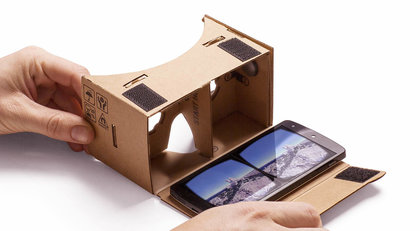 Image courtesy of Michael Kors
Image courtesy of Michael Kors
By Alex Samuely
Marketers’ failure to accurately invest in mobile channels with appropriate budgets has resulted in a struggle to measure return on investment, meaning that brands must fully integrate mobile with their marketing strategies this year, according to a report from Forrester Research.
The research firm’s latest report identifies 2016 mobile marketing and app trends, focusing on how brands can become key differentiators in their respective industries by serving mobile moments to consumers in an effort to revamp the customer experience. Many companies underinvested in mobile last year, suggesting that the leaders of the pack – who maintain strong mobile budgets – will effectively measure the channel’s return on investment in 2016.
“Mobile is the most disruptive change in consumer behavior in years,” said Thomas Husson, vice president and principal analyst of marketing and strategy at Forrester Research. “Marketers know this and they keep saying mobile is strategic.
“However, reality is that they struggle measuring ROI of mobile because they do not clearly articulate how mobile can serve their marketing objectives and because they don't measure the right metrics.”
Embracing mobile
Forrester previously predicted a plethora of marketers would underinvest in mobile, a notion that the company believes will carry over into 2016, barring several exceptions. Many brands view mobile as a sub-digital media channel, resulting in an inefficient use of one of today’s most potentially lucrative communication mediums.
However, this news is positive for the 20 percent of companies who maintain their desired mobile budgets and the 33 percent of marketers who understand how to measure mobile ROI.
Forrester expects digitally-savvy brands to engage in a slew of trends in 2016, including mobilizing storytelling with sounds, sights and motion, aligning branded material with context and powering mobile moments via deep marketing automation.
To maximize mobile moments, marketers must work alongside mobile engagement solutions and partners to better engage with customers at the most optimal times.
 Dunkin' Donuts rolls out mobile moments via holiday-themed games
Mobile will continue augmenting offline channels as well, thanks to the proliferation of digital wallets that hold loyalty programs and relevant coupons. Consequently, smart marketers will need to leverage the channel to transform in-store and offline experiences.
“To truly differentiate via mobile, you need to rethink your customer journey,” Mr. Husson said. “This takes time and requires marketers to involve lots of different stakeholders.
“So many of these brands' efforts may not yet be visible but they will pay off,” he said. “If you only look at your competitors' apps, you may think they're not necessarily ahead of you.
“However, a lot may happen in the background to better serve customers in their mobile moments. Having said that, some brands like Starbucks, TripIt, Audi, Domino's Pizza and John Lewis deliver great mobile experiences.”
The result is that marketers should focus on aligning business outcomes with mobile success metrics. If brands want to measure mobile ROI more effectively, the channel should be serving their broader business goals.
Mobile Web vs. apps
Forrester also reports that the divide between apps and mobile Web is beginning to fade. Apple’s Web Markup and Google’s App Indexing will likely culminate in more individuals using browsers to find new apps this year.
Additionally, consumers are now enjoying fast-loading pages, thanks to Facebook’s Instant Articles and Google’s Accelerated Mobile Pages, meaning that marketers have no excuse not to optimize their mobile sites.
One way to take advantage of this growing trend is to leverage the mobile Web to acquire new consumers and cinch engagement with an app.
A Forrester Research analyst at Mobile Marketer's Mobile FirstLook: Strategy 2016 urged marketers to create a comprehensive strategy to better compete for consumers’ mobile moments with an application and a toolbox of mobile tactics (see story).
Additionally, mobile messaging is set to enjoy an upward trajectory, as messaging apps start transforming into veritable platforms. A growing number of brands are already teaming up with Facebook Messenger after realizing its potential as a communication channel for offering customer service and building personal relationships with mobile users (see story).
Dunkin' Donuts rolls out mobile moments via holiday-themed games
Mobile will continue augmenting offline channels as well, thanks to the proliferation of digital wallets that hold loyalty programs and relevant coupons. Consequently, smart marketers will need to leverage the channel to transform in-store and offline experiences.
“To truly differentiate via mobile, you need to rethink your customer journey,” Mr. Husson said. “This takes time and requires marketers to involve lots of different stakeholders.
“So many of these brands' efforts may not yet be visible but they will pay off,” he said. “If you only look at your competitors' apps, you may think they're not necessarily ahead of you.
“However, a lot may happen in the background to better serve customers in their mobile moments. Having said that, some brands like Starbucks, TripIt, Audi, Domino's Pizza and John Lewis deliver great mobile experiences.”
The result is that marketers should focus on aligning business outcomes with mobile success metrics. If brands want to measure mobile ROI more effectively, the channel should be serving their broader business goals.
Mobile Web vs. apps
Forrester also reports that the divide between apps and mobile Web is beginning to fade. Apple’s Web Markup and Google’s App Indexing will likely culminate in more individuals using browsers to find new apps this year.
Additionally, consumers are now enjoying fast-loading pages, thanks to Facebook’s Instant Articles and Google’s Accelerated Mobile Pages, meaning that marketers have no excuse not to optimize their mobile sites.
One way to take advantage of this growing trend is to leverage the mobile Web to acquire new consumers and cinch engagement with an app.
A Forrester Research analyst at Mobile Marketer's Mobile FirstLook: Strategy 2016 urged marketers to create a comprehensive strategy to better compete for consumers’ mobile moments with an application and a toolbox of mobile tactics (see story).
Additionally, mobile messaging is set to enjoy an upward trajectory, as messaging apps start transforming into veritable platforms. A growing number of brands are already teaming up with Facebook Messenger after realizing its potential as a communication channel for offering customer service and building personal relationships with mobile users (see story).
 More brands will likely incorporate Google Cardboard into their advertising strategies
For those who seek to delve deeper into brand innovation, Forrester highlights the recent – and still growing – rise of smartphone-enabled technologies such as augmented reality, virtual reality and artificial intelligence. The company predicts virtual reality platforms, such as Google Cardboard, will dangle new experimental opportunities toward marketers, especially as they become more widespread and less expensive.
Hype for the Internet of Things will continue to expand to the consumer-facing space, as adoption of wearables and smart home devices climbs higher. Therefore, brands should ensure they kick off 2016 by keeping an eye on the future, which could be achieved by delegating teams or projects to innovating forward-thinking goals.
Ultimately, mobile cannot be the year’s most underestimated channel if marketers want to ramp up engagement and acquire more customers.
“The main takeaway is that marketers who measure the impact of mobile across channels will be able to demonstrate a ROI,” Mr. Husson said. “They should really think big and align mobile success metrics with business outcomes.”
More brands will likely incorporate Google Cardboard into their advertising strategies
For those who seek to delve deeper into brand innovation, Forrester highlights the recent – and still growing – rise of smartphone-enabled technologies such as augmented reality, virtual reality and artificial intelligence. The company predicts virtual reality platforms, such as Google Cardboard, will dangle new experimental opportunities toward marketers, especially as they become more widespread and less expensive.
Hype for the Internet of Things will continue to expand to the consumer-facing space, as adoption of wearables and smart home devices climbs higher. Therefore, brands should ensure they kick off 2016 by keeping an eye on the future, which could be achieved by delegating teams or projects to innovating forward-thinking goals.
Ultimately, mobile cannot be the year’s most underestimated channel if marketers want to ramp up engagement and acquire more customers.
“The main takeaway is that marketers who measure the impact of mobile across channels will be able to demonstrate a ROI,” Mr. Husson said. “They should really think big and align mobile success metrics with business outcomes.”
